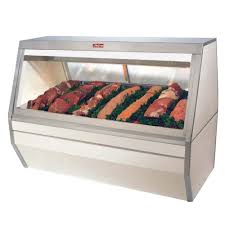Welcome to SureBeam Middle East
Definition of Irradiation

“Irradiation is a process of exposing foods to very high-energy electrons, which are similar to light waves or microwaves. This process is sometimes referred to as ionizing radiation or Irradiation.”
Irradiated foods are
foods that are sterilized using Electron Beam, x-rays or radioactive materials that kill bacteria.
The process is called irradiation. It is used to remove germs from
food. It does not make the food itself radioactive. The benefits of
irradiating food include the ability to control insects and
bacteria, such as
salmonella.
Food Safety

Ionizing radiation will reduce, or even eliminate, pathogenic microorganisms such as Salmonella, E. coli O157:H7, Clostridium perfringens, Staphylococcus aureus;, Listeria monocytogenes, Campylobacter jejuni, and the protozoan parasite Toxoplasma gondii on meat and poultry.


Food and Drug Administration FDA has approved irradiation of meat and poultry



Process of Irradiation

The Food is packed in containers and moved by conveyor belt into
a shielded room.
Exposure of food to carefully controlled amounts
of ionizing radiation for a specific time.
The radiation energy
causes changes in molecules by breaking chemical bonds. At small
doses, irradiation inhibits food spoilage problems.
Medium doses
will rapture the DNA structure, so the microorganisms can’t
reproduce. High doses will sterilize foods even in frozen
state.
Effectiveness of process

The effectiveness of the process depends on:
- The organism’s sensitivity to irradiation.
- The rate at which it can repair damaged DNA.
- Amount of DNA in the target organism.
1- Parasites have large amounts of DNA, are rapidly killed by an extremely low dose of irradiation.
2- Bacteria have less DNA, so it takes more irradiation for killing.
3- Viruses are the smallest pathogens that have nucleic acid, and they are, in general, resistant to irradiation at doses approved for foods.
At doses that are commonly used to irradiate ground beef, the expected pathogen reduction is:
coli O157:H7 (99.99%) Salmonella (99% to 99.99%) Listeria (99.9% to 99.99%)
Carcass Irradiation: The American Meat Institute (AMI) has submitted a petition to the
USDA’s Food Safety and Inspection Service (FSIS) to recognize the use of low penetration and low dose electron beam irradiation on the surface of chilled beef carcasses as a processing aid.
Ready-to-eat Foods: Grocery Manufacturer’s Association (GMA) has petitioned FDA to allow irradiation of certain prepared foods including hot dogs, luncheon meat, etc.
Refrigeration of Irradiated food

Irradiation approved for poultry and meat can reduce numbers of pathogenic and spoilage bacteria
but it does not sterilize the products.
Poultry and meat products will continue to require proper refrigeration and handling by retailers and consumers.
Irradiation complements proper food handling practices, including refrigerated storage. It does not replacement them.
Nutrition of Irradiated Foods

The FAO/IAEA/WHO joint committees stated that irradiation of food at doses up to 10 kGy introduced no special nutritional problem.
- Irradiated foods are wholesome and nutritious.
- Irradiation produces no heat within food.
- Losses of proteins, carbohydrates, and fats are still very small at very large doses.
- No trace minerals are lost.



Connect with us
+966 (11) 4984462
faq@smebeam.com